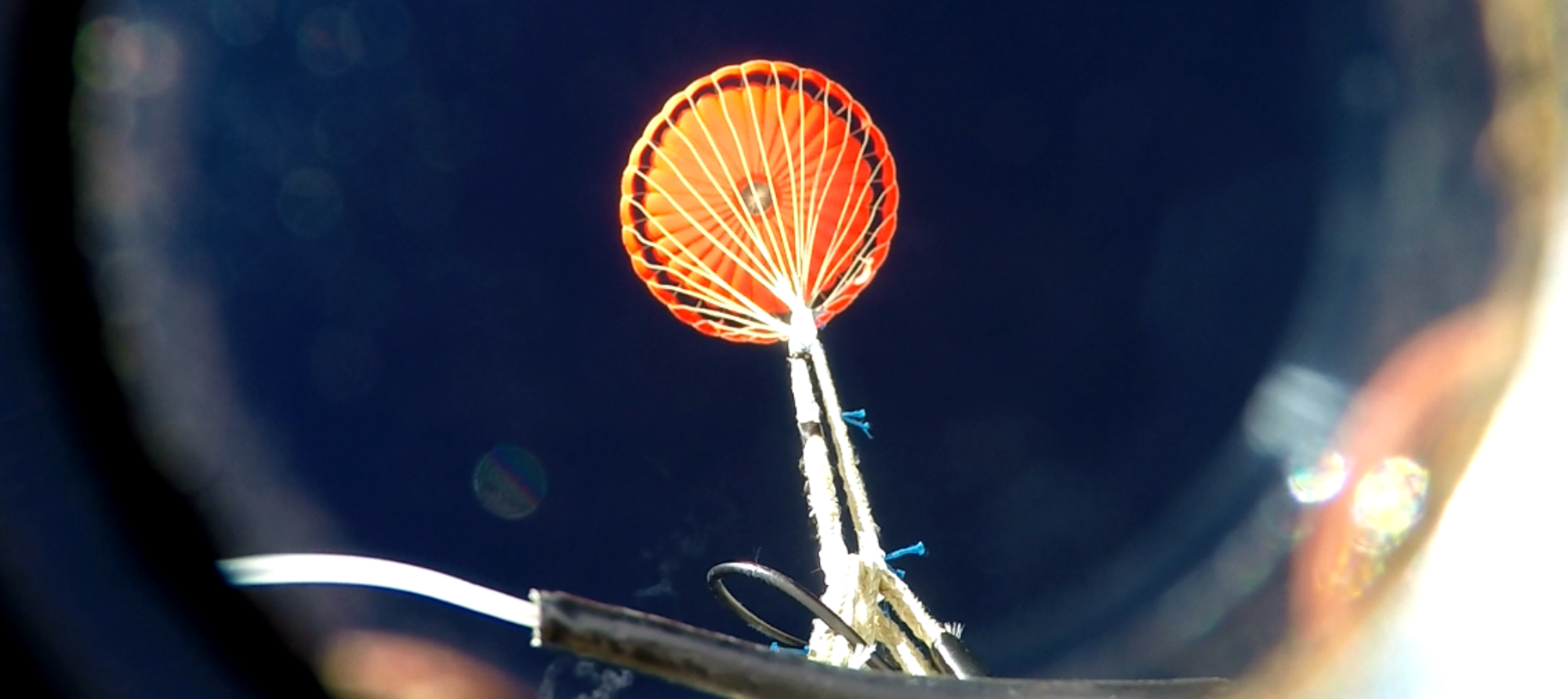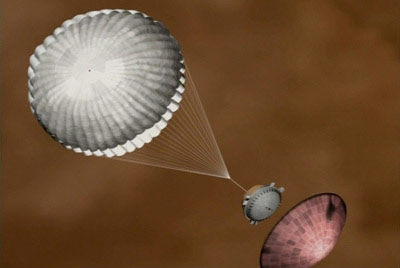The Huygens Programme focused on the exploration of Titan, the largest moon of Saturn. The European contribution was the Huygens probe. This investigated the atmospheric composition and surface characteristics of Titan, Saturn’s largest moon. Titan is unique in the solar system in that it is the only moon with a significant atmosphere. At the moon’s surface, atmospheric density reaches approximately five times the air density at Earth’s surface.
The significance of the Huygens mission stems from studies which indicated that the frozen moon harbours gaseous and liquid hydrocarbons in a predominantly nitrogen atmosphere. This is thought to be just like the conditions that prevailed in the early Earth atmosphere before bacteria appeared. Titan is far too cold for life and therefore this primordial soup has been slow to evolve. Titan is revealing to scientists what complex carbon molecules the action of the Sun’s rays can produce from simple gases.
ESA required the development of a parachute system that would safely take the Huygens probe safely through a near cryogenic atmosphere to the surface of Titan. The overall descent time was critical to ensure continuous communication, battery survival and descent stability to allow the onboard experiments, in particular, the imaging system, to function correctly.
Members of the Vorticity team were responsible for the delivery of the Huygens Descent Control Sub-System (DCSS), the three-stage parachute system that decelerated and controlled the descent of the Huygens probe through the Titan’s atmosphere. This was a leading mission for Vorticity enabling our team to deepen their expert knowledge of parachute system analysis, design and verification. Our team were responsible for the design and qualification of the parachutes, deployment mortar, inter-stage pyrotechnic release mechanisms, swivels, and parachute packing and containment system.

Following a number of revisions to the Titan entry trajectories and atmosphere models, the Vorticity team conducted an extensive analysis of the parachute system to confirm its compatibility with the new conditions. As part of the programme, the Vorticity team produced:
- Monte Carlo entry simulations to derive revised parachute system initiation dispersions
- Review of parachute deployment and inflation load predictions and stressing
- Parachute structural testing to confirm structural margins
- Descent trajectory modelling, simulation of transonic stability including deriving revised values of pitch damping derivatives for the probe using FSI
- 12 DOF system stability modelling and gust response, and released item re-contact predictions


